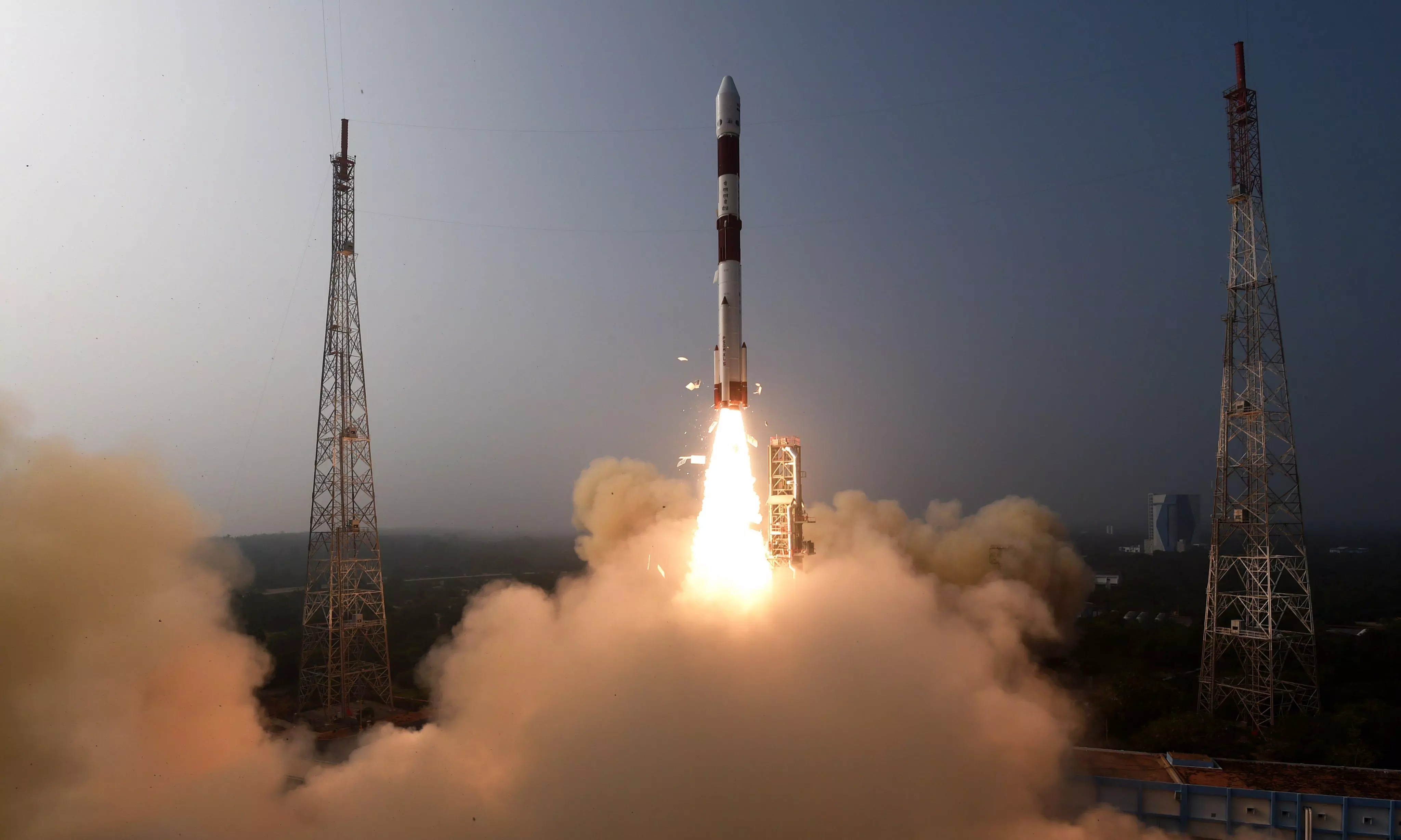
Explained: What's ISRO's X-Ray Polarimeter Satellite, and what's the mission objective?
It makes India the second country after the United States’ NASA to send a satellite into space to study black holes and neutron stars

After achieving various milestones in the year gone by, including Chandrayaan-3, the Indian Space Research Organisation (ISRO) on Monday (January 1) successfully launched its maiden X-Ray Polarimeter Satellite or XPoSat that would offer several insights into celestial objects like black holes.
The mission assumes great significance as it makes India the second country after the United States’ NASA to send a satellite into space to study black holes and neutron stars in the Milky Way galaxy. In its C58 mission, the ISRO’s Polar Satellite Launch Vehicle (PSLV) placed the primary XPoSat into a 650 km Low Earth Orbit as intended after lifting off at the pre-fixed time of 9.10 am from the first launch pad in the Satish Dhawan Space Centre in Andhra Pradesh’s Sriharikota.
An elated ISRO chief S Somanath emerged from the Mission Control Centre, stating, “Happy New Year to all of you. So yet another successful mission of PSLV has been accomplished. PSLV-C58 has placed the primary satellite XPoSat in the desired orbit.”
“From this point, the orbit of PSLV 4th stage will be reduced to a lower orbit where the upper stage of PSLV which is described as POEM will carry out experiments with the onboard payloads and that will take some time,” he added.
What is XPoSat and what is the objective behind its launch?
XPoSat, which stands for X-ray Polarimeter Satellite, is the ISRO’s first dedicated scientific satellite to carry out research in space-based polarisation measurements of X-ray emission from celestial sources.
The X-Ray polarisation serves as a crucial diagnostic tool for examining the radiation mechanism and geometry of celestial sources.
The satellite is carrying two scientific payloads: POLIX (Polarimeter Instrument in X-rays) and XSPECT (X-ray Spectroscopy and Timing). POLIX is designed to measure polarimetry parameters by Raman Research Institute while XSPECT is built by the UR Rao Satellite Centre, Bengaluru.
The mission life is about five years. The mission objective is to measure the polarisation of X-rays in the energy band 8-30keV emanating from about 50 potential cosmic sources through Thomson Scattering by POLIX payload. It will also carry out long-term spectral and temporal studies of cosmic X-ray sources in the energy band 0.8-15keV through XSPECT payload. Polarisation and spectroscopic measurements of X-ray emissions from cosmic sources will also be carried out by POLIX and XSPECT payloads respectively in the common energy band.
What’s the significance of the XPoSat mission?
XPoSat will be a ground breaking mission as it will facilitate X-ray polarisation measurements from bright sources, that too, in the medium energy band (8-30 keV) energy range – which has never been attempted before.
The XPoSat team has identified several sources radiating X-rays. XPoSat will observe two kinds of sources — persistent sources (targeted and known sources) and transient sources (pulsars, active galactic nuclei, magnetars). Out in space, X-rays get polarised due to multiple causes.
Astronomers till now have largely used and depended on spectroscopic, imaging and timing–based data obtained from either ground-based telescopes or satellite-based missions from the optical to the radio frequency band of the electromagnetic spectrum. Polarisation of celestial sources was done either in the optical or radio bands.
What was the launch vehicle for the mission?
The launch vehicle for the XPoSat launch was ISRO’s ever-reliable PSLV (Polar Satellite Launch Vehicle), which has been used in the past for India’s first lunar probe mission Chandrayaan-1, the Mars Orbiter Mission and the ongoing Aditya-L1 solar mission.
The XPoSAT mission launch also marked the 60th flight of the PSLV. The 260-tonne rocket carries an advanced astronomy observatory meant to study black holes and neutron stars. “PSLV-C58 vehicle placed the satellite precisely into the intended orbit of 650 km with 6-degree inclination. The POEM-3 is being scripted,” ISRO posted in X. Soon after, ISRO chief S Somanath announced the successful launch. POEM refers to PSLV Orbital Experimental Module.
Former ISRO chairman G Madhavan Nair has said the PSLV rocket system has evolved as the most reliable and cost-effective one in the global scenario. “When we look back in history, we started this journey in 1993 and since then, most of the missions have been successfully completed,” he told news agency ANI.
What is a black hole?
A black hole is an astronomical object with a gravitational pull so strong that nothing, not even light, can escape it. A black hole’s “surface,” called its event horizon, defines the boundary where the velocity needed to escape exceeds the speed of light, which is the speed limit of the cosmos. Matter and radiation fall in, but they can’t get out.
Two main classes of black holes have been extensively observed. Stellar-mass black holes with three to dozens of times the Sun’s mass are spread throughout our Milky Way galaxy, while supermassive monsters weighing 100,000 to billions of solar masses are found in the centre of most big galaxies.
A stellar-mass black hole forms when a star with more than 20 solar masses exhausts the nuclear fuel in its core and collapses under its own weight. The collapse triggers a supernova explosion that blows off the star’s outer layers. But if the crushed core contains more than about three times the Sun’s mass, no known force can stop its collapse to a black hole. The origin of supermassive black holes is poorly understood, but they exist from the very earliest days of a galaxy’s lifetime.

